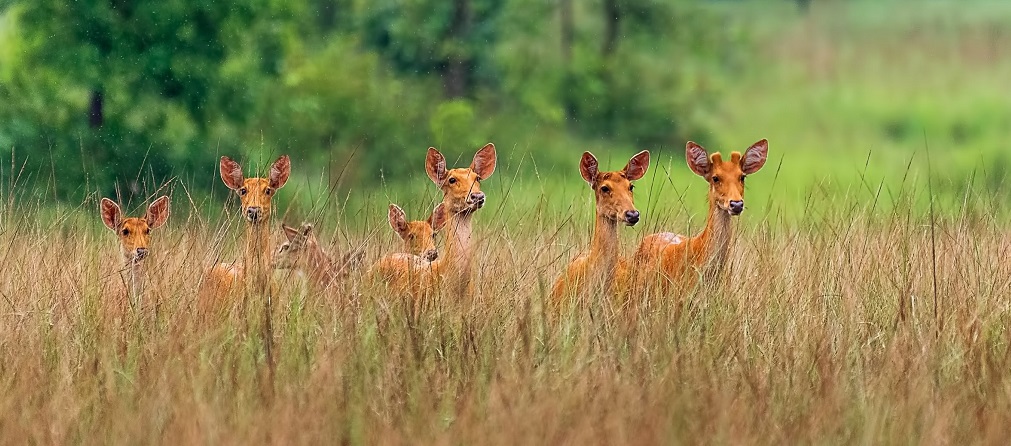Madhya Pradesh is hailed as the ideal state for wildlife tourism, is a treasure land of breathtaking landscapes. Satpura National Park, one of its popular destinations, offers an unmatched experience for nature and wildlife enthusiasts. A jeep safari at Satpura is not merely a journey through the wilderness but an immersive adventure that unveils the untamed beauty of the region. With the choice of morning or evening safari slots, each ride offers a different experience. Satpura National Park is a thrilling escape into the heart of Madhya Pradesh’s extraordinary wildlife. The national park is easily accessible from the neighbouring cities like Jabalpur, Hoshangabad, Pachmarhi, Sanchi, Ujjain and Bhopal, the capital city of Madhya Pradesh.
Satpura Jeep Safari Booking
To maximize your chances of spotting the park's incredible wildlife, Satpura offers jeep safaris in two shifts: morning and evening. Starting at sunrise, the morning safari typically lasts around four hours. Evening safaris, on the other hand, are scheduled in the late afternoon hours and are again operated for four hours. Mostly, the evening safaris are wrapped up with the setting of sun. therefore, the time of the Satpura jeep safari varies with seasonal transformations.
Steps to Book a Jeep Safari
Booking early for the jeep safari in Satpura is indeed a wise decision. Satpura Online Safari Booking is a straightforward process:
1. Visit authentic safari booking websites or authorized travel portals.
2. Choose your preferred date and time slot.
3. Provide your necessary identification details. It is compulsory.
4. Provide accurate details about the number of adults and kids in your group.
5. Pay the required fee, which covers park entry, vehicle, and guide charges.
Once booked, all you need to do is arrive at the designated entry gate, where your adventure awaits.
Popular Fauna Species Spotted in Satpura
Satpura National Park is home to an array of fascinating animals. Here are some of the most sought-after species you can encounter:
1. Tiger - The majestic Bengal tiger, the park’s top predator, is a true marvel to behold. Known for their striking orange coats with black stripes, these elusive creatures symbolize power and grace.
2. Indian Giant Squirrel - With its multi-coloured fur and bushy tail, the Indian giant squirrel is a real treat to eyes. These shy creatures are often spotted leaping between branches in the park's tall trees.
3. Leopard - Satpura’s leopards are masters of stealth, blending seamlessly with their surroundings. Sleek and powerful, they are often seen resting on rocky outcrops or prowling through the undergrowth in search of prey.
4. Indian Bison (Gaur) - The Indian bison is a muscular, dark-coated giant and is a symbol of strength. Often seen grazing in open grasslands or near waterholes, they move in herds, led by a dominant male.
5. Wild Dog (Dhole) - The endangered dhole, or Indian wild dog, is a highly social and intelligent predator. Known for their reddish coats and bushy tails, these pack hunters are skilled at taking down prey larger than themselves.
6. Sloth Bear - Famed for their shaggy black coats and long, curved claws, sloth bears for honey. Despite their seemingly slow demeanour, they are surprisingly fast and agile when threatened.
Beyond the prominent species, Satpura boasts an impressive roster of other wildlife. Visitors can spot spotted deer, sambar deer, langurs, crocodiles, and a wide variety of birds, including hornbills, kingfishers, and owls. The park is also home to reptiles like pythons and monitor lizards, adding to its ecological diversity.
Tips to Experience the Best of Satpura Safari
1. Book Early: Secure your safari slots well in advance to avoid disappointment, especially during the peak season from October to June.
2. Dress Smartly: Wear neutral-coloured clothing to blend with the surroundings and avoid startling the animals.
3. Carry Essentials: Bring binoculars, a camera with a zoom lens, and a water bottle to make the most of your trip.
4. Respect Wildlife: Maintain silence and keep a safe distance from animals. Avoid feeding or disturbing them.
5. Listen to Your Guide: Trust your naturalist guide's expertise; they know the park's terrain and animal behaviour well.
6. Stay Alert: Wildlife sightings can be fleeting, so keep your eyes and ears open throughout the safari.




